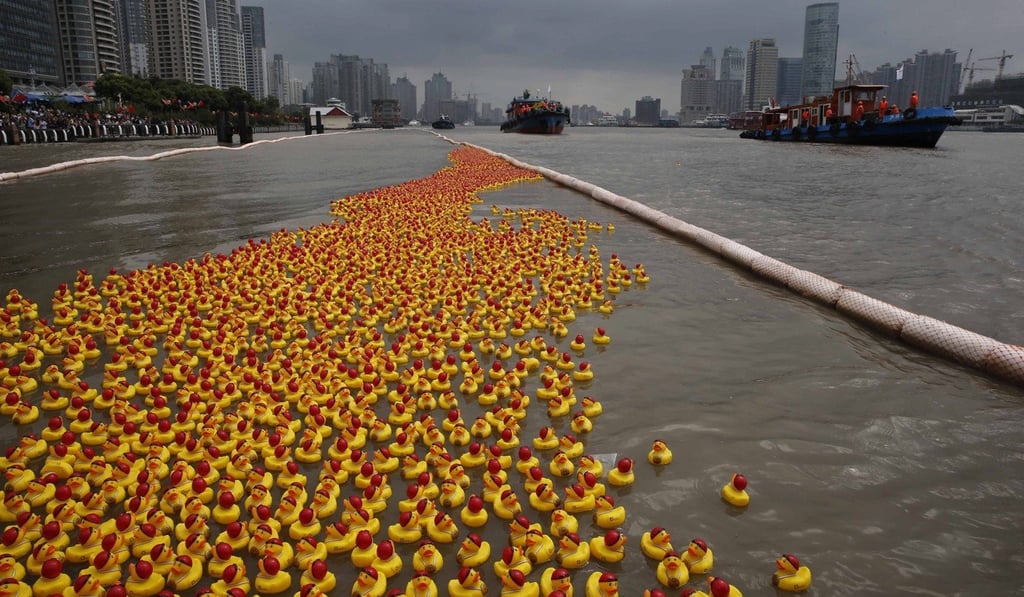How the rubber duck is Hong Kong’s business and spirit of ‘can do’
Building a business in rubber ducks made Lam Leung-tim a fortune, a tale that embodied the heyday of Hong Kong manufacturing and the city’s feisty “can do” spirit

In 2013, Dutch artist Florentijn Hofman set afloat a massive, 12-metre rubber duck in Victoria Harbour as part of a world tour. Hofman was on a vague mission of peace and togetherness dedicated to the citizens of the world. The ongoing tour that began in 2007 is a testament to the enduring cultural potency of the small children’s toy.
Along the way, the duck deflated in Hong Kong, blew apart in Taiwan, and was the subject of a legal battle with a Canadian organisation promoting its own duck. Hofman himself wound up in a public debate about art and intellectual property rights with Chinese artists. The duck tour has said as much about the business of pop art as it has about the reliance on day-to-day items that form a collective consciousness.
Hofman may not have realised just how much of a debt he owed to the original “King of Rubber Ducks”, Lam Leung-tim, the man who made his fortune selling rubber ducks to the world during Hong Kong’s heyday as toy supplier to the world. It was perhaps indicative of Hong Kong’s evolution as a city that a piece of its industrial history should wind up as giant installation pop art in Victoria Harbour.
When pundits, politicians and businessmen talk about Hong Kong’s strengths, and the invariable reference to the city’s “can-do” spirit today, the story of Lam Leung-tim, toy tycoon and founder of Hong Kong-based toy manufacturer Forward Winsome Industries, makes that association.

Born in 1924, Lam spent his early childhood in Hong Kong, where his father worked as a private chef at Old Peak Road. He went back to his hometown Nanhai with his mother at his age of seven, where his maternal grandfather taught him the classics. His father asked him to return to Hong Kong, and Lam was a student at Wah Yan College.
What should have been a happy childhood in Hong Kong was destroyed when Japan attacked the city on December 8, 1941. Lam remembers incoming Japanese fighter-planes bombing the harbour that morning. Worse was to come.
